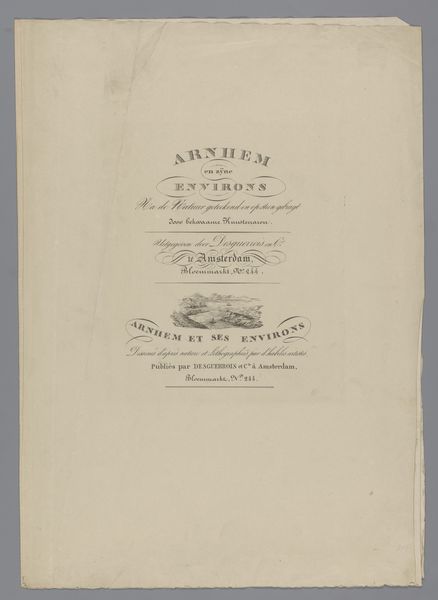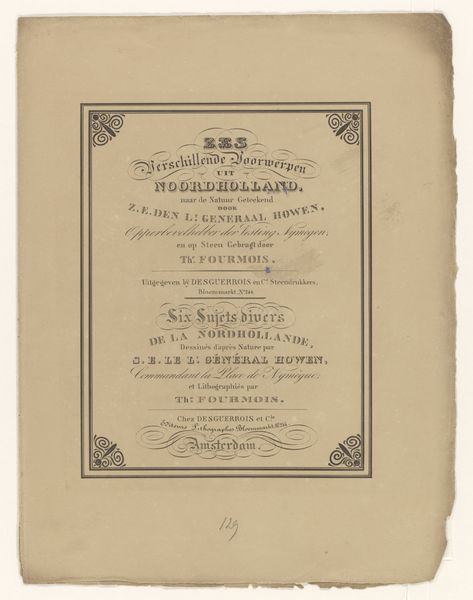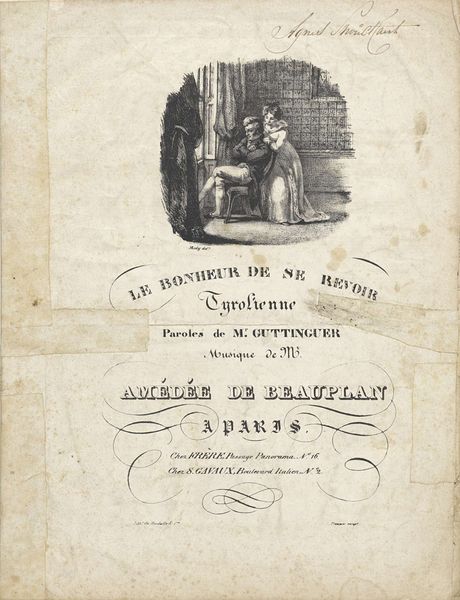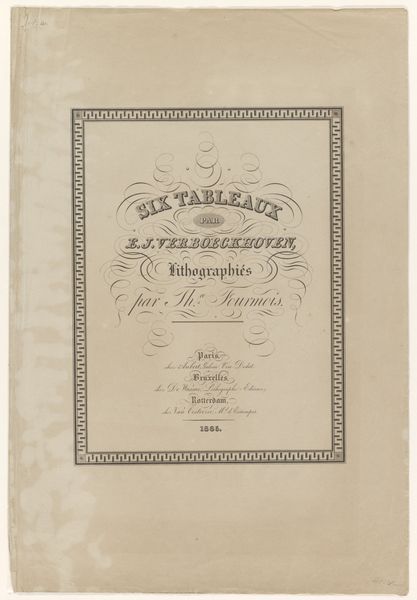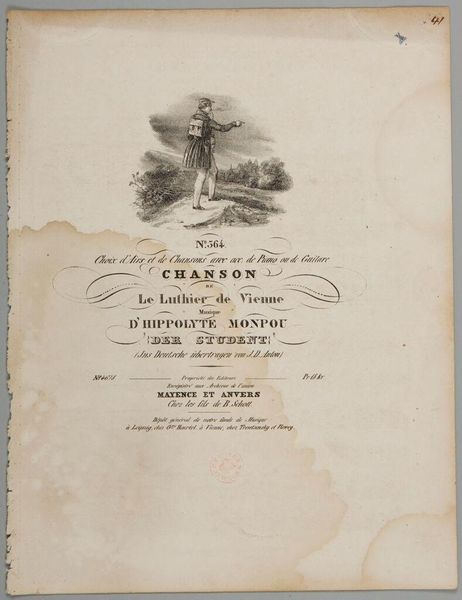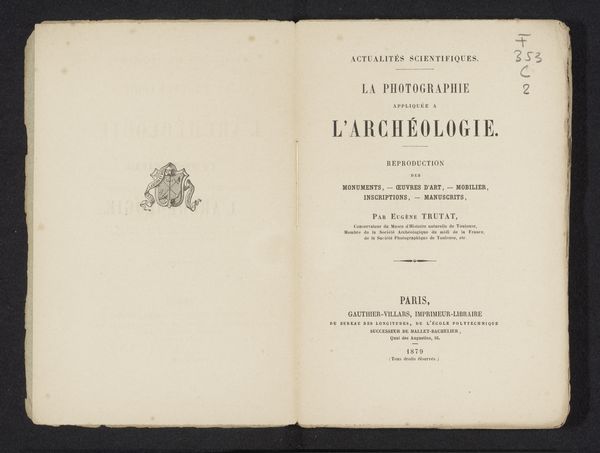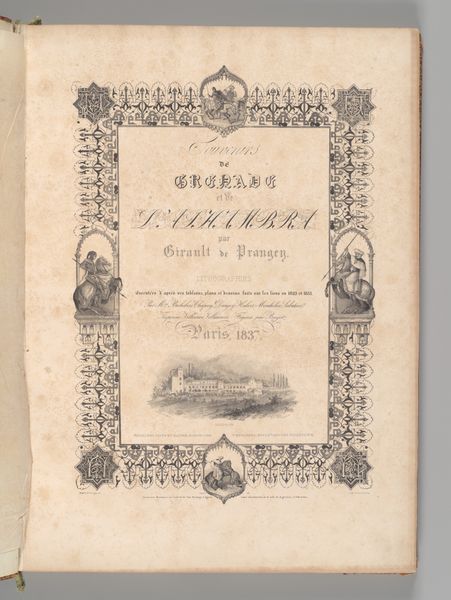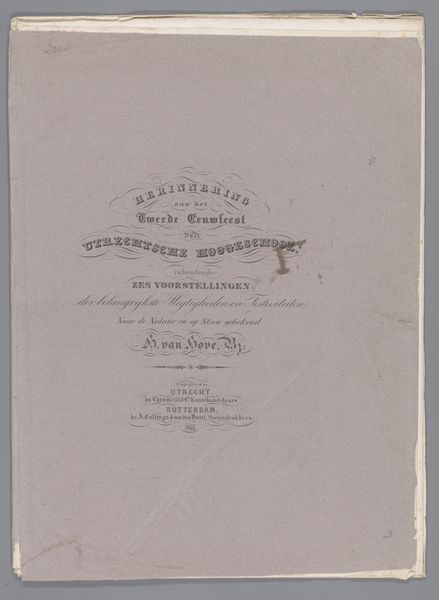
Omslag voor twaalf prenten over de drijfjacht met paarden c. 1825 - 1827
0:00
0:00
drawing, graphic-art, lithograph, print, etching, paper
#
drawing
#
graphic-art
#
aged paper
#
homemade paper
#
paper non-digital material
#
narrative-art
#
lithograph
# print
#
etching
#
sketch book
#
hand drawn type
#
personal journal design
#
paper
#
personal sketchbook
#
journal
#
fading type
#
romanticism
#
genre-painting
#
sketchbook art
Dimensions: height 370 mm, width 290 mm, width 580 mm
Copyright: Rijks Museum: Open Domain
This is the cover for a set of twelve prints about the horse-driven hunt, made by Bernard Édouard Swebach, probably in the mid-19th century. It’s a lithograph, meaning that it was printed from a flat stone surface, using the repellant properties of oil and water. The design is dominated by elegant typography, with a small vignette of a hunt scene at the top. Lithography was a relatively new technology at the time, a direct, almost "autographic" method suited to the rapid reproduction of images. It democratized printmaking, making it far more accessible and affordable. This meant that a wider range of subjects could be represented and sold. Here, we see an aristocratic pastime rendered as a commodity. The cover itself is relatively simple, but the prints it contained would have offered detailed views of the hunt. The lithographic process, with its capacity for nuanced shading and detail, was ideal for capturing the drama and excitement of the chase. Considered in its historical context, this print invites us to reflect on the intersection of art, industry, and social class. By understanding the materials and processes involved, we can appreciate the full significance of this unassuming artwork.
Comments
No comments
Be the first to comment and join the conversation on the ultimate creative platform.
